Everything about Physics – What is Physics – Learn Physics
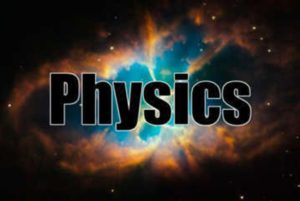
What is Physics
The branch of science concerned with the nature and properties of matter and energy. The subject matter of physics includes mechanics, heat, light and other radiation, sound, electricity, magnetism, and the structure of atoms.
Physical Quantities – Scalars & Vectors
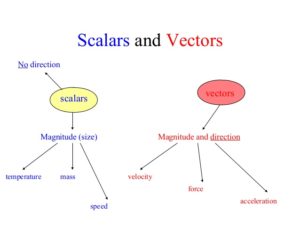
The quantity is either a vector or a scalar. These two categories can be distinguished from one another by their distinct definitions: Scalars are quantities that are fully described by a magnitude (or numerical value) alone. Vectors are quantities that are fully described by both a magnitude and a direction.
In physics, large number of physical quantities can be broadly classified into two categories– Scalars & Vectors.
What is a scalar?
- A scalar is a physical quantity that has only a magnitude (size) E.g.: Distance, speed, time, power, energy, etc.
What is a vector?
- A vector is a physical quantity that has both a magnitude and a direction. E.g. Velocity, displacement, acceleration, force etc.
Some physical quantities like moment of inertia, stress, etc. are neither scalar nor vector. They are tensor.
Learn Physics – Newton’s Law of Motion
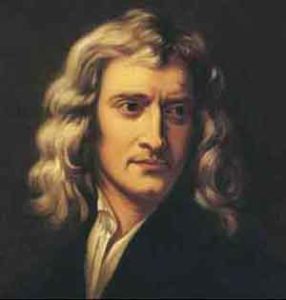
Explain Newton’s First Law of Motion :
Newton’s First Law of Motion – sometimes referred to as the law of inertia. An object at rest stays at rest and an object in motion stays in motion with the same speed and in the same direction unless acted upon by an unbalanced force
First law of Motion
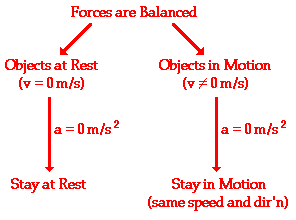
An object at rest will remain at rest or in uniform motion remains in uniform motion unless acted on by an external unbalanced force. This law is often called the law of inertia. i.e., resistance to change.
Explain Newton’s second law of motion
The acceleration of an object as produced by a net force is directly proportional to the magnitude of the net force, in the same direction as the net force, and inversely proportional to the mass of the object.
Second Law of Motion
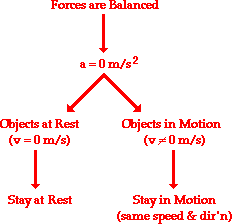
The rate of change of momentum of a body is directly proportional to the unbalanced external force applied on it.
Impulse: If a large force acts on a body or particle for a smaller time, then impulse (J) = product of force and time. Then, J = Ft F = force, and t = time So, J = Ft = mat. Impulse = Change in momentum.
Explain Newton’s Third Law of Motion
For every action, there is an equal and opposite reaction. The statement means that in every interaction, there is a pair of forces acting on the two interacting objects. The size of the forces on the first object equals the size of the force on the second object.
Third Law of Motion
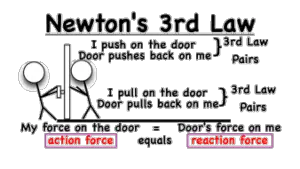
For every action there is an equal and opposite reaction.
Instances of Newton’s Laws of Motion First law of Motion A magician pulls a tablecloth out from under dishes and glasses on a table without disturbing them. A person’s body is thrown outward as a car rounds a curve on a highway. Second law of Motion Pushing a child on a swing is easier than pushing an adult on the same swing, because the adult has more inertia. A soccer player kicks a ball with his foot and the toes are left stinging. Two students are in a baseball game. The first student hits a ball very hard and it has a greater acceleration than the second student who bunts the ball lightly. Third law of Motion Rockets are launched into space using jet propulsion where exhaust accelerates out from the rocket and the rocket accelerates in an opposite direction.
Circular Motion
What is Circular Motion?
Circular motion is a movement of an object along the circumference of a circle or rotation along a circular path. It can be uniform, with constant angular rate of rotation and constant speed, or non-uniform with a changing rate of rotation.
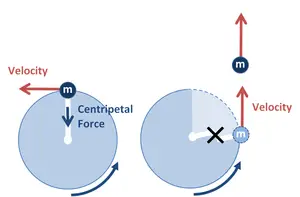
- Motion of a body along a circular path is called circular motion.
- Centripetal force – while a body is moving along a circular path an external force required to act radially inward. This force is called centripetal force.
Friction
What is Friction?
Friction is the force resisting the relative motion of solid surfaces, fluid layers, and material elements sliding against each other. There are several types of friction: Dry friction resists relative lateral motion of two solid surfaces in contact.
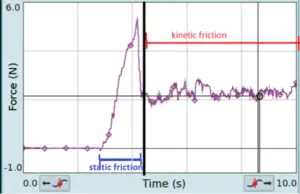
Friction is a force that is created whenever two surfaces move or try to move across each other.
- Friction always opposes the motion or attempted motion of one surface across another surface.
- Friction is dependent on the texture of both surfaces.
- Friction is also dependent on the amount of contact force pushing the two surfaces together.
Instances where friction is important 1. Walking 2. Driving 3. Picking something up 4. Car brakes 5. Erosion in the environment 6. Burning up meteors in the atmosphere before they hit Earth. 7. Striking a match/building a fire. 8. Rubbing your hands together when it’s cold. 9. Friction keeps knots from coming undone (like in shoelaces).
Everything about Physics – Work and Energy
Explain Work and Energy
The work-energy principle states that an increase in the kinetic energy of a rigid body is caused by an equal amount of positive work done on the body by the resultant force acting on that body. Conversely, a decrease in kinetic energy is caused by an equal amount of negative work done by the resultant force.
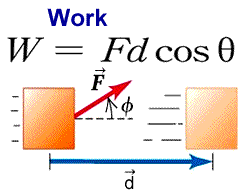
- Work refers to an activity involving a force and movement in the direction of the force. Work done w = Fs cosθ Positive work: If θ < 90° Zero work: If θ = 90° Negative work: If θ > 90°
- A force of 20 newtons pushing an object 5 meters in the direction of the force does 100 joules of work.
- The SI unit of work is the joule (J),
- Capacity of doing work is called energy.
- It may exist in potential, kinetic, thermal, electrical, chemical, nuclear, or other various forms.
- To do 100 joules of work, you must expend 100 joules of energy.
- Energy cannot be created or destroyed. It can only be transferred to other objects or converted into different forms. This is Law of Conservation of energy.
- The SI unit of energy is joule.
- It is a scalar quantity.
- The energy associated with motion is called kinetic energy (K).
K MV 2 where M is mass and V is the velocity.
- The energy associated with position is called potential energy (U). U = mgh; where g is acceleration due to gravity and h is height of the object.
Power
In physics, power is the rate of doing work. It is the amount of energy consumed per unit time. Having no direction, it is a scalar quantity. In the SI system, the unit of power is the joule per second (J/s), known as the watt in honour of James Watt, the eighteenth-century developer of the steam engine.
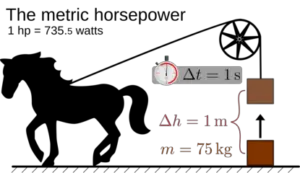
- In physics, power is the rate of doing work. It is the amount of energy consumed per unit time. Having no direction, it is a scalar quantity. In the SI system, the unit of power is the joule per second (J/s), known as the watt in honour of James Watt, the eighteenth-century developer of the steam engine
Power is the rate of doing work.
- Power = Work/ time
- It is equivalent to an amount of energy consumed per unit time.
- The SI unit of power is joule/second.
- One horse power is equivalent of 746 watt.
Gravitation
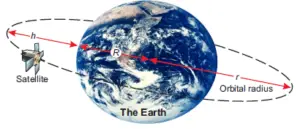
What is Gravitation?
- Under an assumption of constant gravitational attraction, Newton’s law of universal gravitation simplifies to F = mg, where m is the mass of the body and g is a constant vector with an average magnitude of 9.81 m/s2 on Earth. This resulting force is the object’s weight.
Gravitation is a natural phenomenon by which all physical bodies attract each other.
- On Earth, gravity gives weight to physical objects employing a downward force to keep them grounded.
- Gravitational force is always attractive. For example, earth always attracts us but never repels.
- It is weakest force among the four natural forces in nature i.e. electromagnetic, weak and strong nuclear force.
- If there are two objects of mass m1 and m2 and they are placed at distance r apart. Then force between them will be: F = G(m1m2)/r2 where G is the universal gravitational constant. This is called Newton’s Universal Gravitational law.
- G = 6.67 × 10–11 Nm2 /kg2
- Gravitational force is a central and conservative force.
- They can operate over a very long distances.
- According to Newton’s theory, the gravitational attraction between the planets and the sun holds the planets in elliptical orbits around the sun.
- The earth’s moon and moons of the other planets are held in orbits by the attraction between the moons and the planets.
- The force of gravity depends upon the object’s mass or the amount of matter in the object.
- The weight (w) of an object is equal to the mass of the object multiplied by the acceleration due to gravity(g). W = mg
- gmaximum at poles and gminimum at equator.
- gmoon = earth 1 g 6
- The value of ‘g’ decreases with altitude, depth from the earth’s surface.
- g decreases due to rotation of earth.
Weight of a body in a lift
(i) If lift is stationary or moving with uniform speed (either upward or downward), the apparent weight of a body is equal to its true weight.
(ii) If lift is going up with acceleration, the apparent weight of a body is more than the true weight.
(iii) If lift is going down with acceleration, the apparent weight of a body is less than the true weight.
(iv) If the cord of the lift is broken, it falls freely. In this situation the weight of a body in the lift becomes zero. This is the situation of weightlessness.
(v) While going down, if the acceleration of lift is more than acceleration due to gravity, a body in the lift goes in contact of the ceiling of lift.
- Escape speed (ve) is the minimum speed with which an object just crosses the earth’s gravitational field and never comes back. e = = 2GM V 2gR R
- The escape velocity of Earth is about 11.2 kilometres per second and on moon it is 2.4 km/sec.
Study about Physics
Satellites
What is a satellite?
In the context of spaceflight, a satellite is an artificial object which has been intentionally placed into orbit. Such objects are sometimes called artificial satellites to distinguish them from natural satellites such as Earth’s Moon.
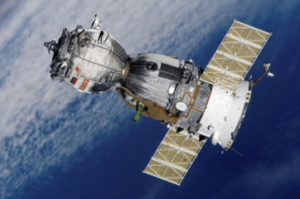
- A satellite is a smaller object in space which orbits around a larger object Planet in space.
- It can be either artificial, like the communication or weather satellites that orbit the Earth, or they can be natural, like our Moon.
- A geostationary satellite is an earth orbiting satellite, placed at an altitude of approximately 35,800 kilometers (22,300 miles) directly over the equator.
- Geostationary satellite revolves in the same direction the earth rotates (west to east). Its time period is 24 hours.
- It is used for Communication, television broadcasting, weather forecasting, defence and intelligence.
- Polar orbiting satellites closely parallel the earth’s meridian lines, thus having a highly inclined orbit close to 90°.
- They pass over the North and South poles each revolution.
- They are used for weather forecasting, earth-mapping, earth observation, etc.



